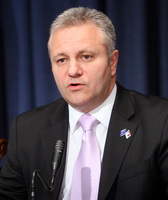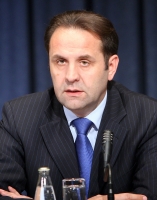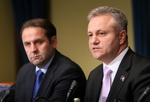- Serbia
Get to know Serbia
- Citizens
Culture and science
Health services
Pension and disability insurance
- Business
Employment
Economy
- Media
- Government
- Contact
Keep in touch
Contact form
Back
Keepin touch
Whether you have a question, comment, suggestion or any problem in the purview of the government, send us your message and we will try to respond as soon as possible. If your problem is not in our purview, we will forward your message to the relevant institution.
Q:
A:
Further RSD 40 billion for enterprise liquidity
Belgrade,
7 May 2009
Serbian Deputy Prime Minister and Minister of Economy and Regional Development Mladjan Dinkic said today that according to a new set of measures for supporting the economy the Serbian government will provide a further RSD 40 billion in loans for enterprise liquidity.
Speaking at a press conference held after a government session at which the new set of measures was adopted, Dinkic said that this will increase the total amount of cheap loans available to RSD 180 billion.
He said that the new measures will be implemented from May 18, adding that according to these measures the interest rate for liquidity loans with a foreign currency clause will be halved, or 3% annually.
Dinkic said that planning is underway to introduce dinar liquidity loans with an annual interest rate of 10.5%, which would be 3.5% less than the equivalent interest rates of the National Bank of Serbia.
He said that larger loans for exporters will also be made available, as well as cheap consumer loans for purchasing building materials.
He said that in April export and industrial production did not fall further, adding that renewed demand within the country and abroad has made it possible to reopen the large blast furnace at the steel mill in Smederevo.
Dinkic said that this is the beginning of the end of economic crisis in Serbia, noting that the greatest decline in exports was recorded in February – 25%, while it amounted to 18% in March compared with the same month last year.
He noted that all indicators say that the duration of the crisis will depend on the external factors that caused the crisis.
Apart from new incentives for the economy, accent will be put on infrastructure projects and incentives for the construction industry, he said.
He said that the new measures will be implemented from May 18, adding that according to these measures the interest rate for liquidity loans with a foreign currency clause will be halved, or 3% annually.
Dinkic said that planning is underway to introduce dinar liquidity loans with an annual interest rate of 10.5%, which would be 3.5% less than the equivalent interest rates of the National Bank of Serbia.
He said that larger loans for exporters will also be made available, as well as cheap consumer loans for purchasing building materials.
He said that in April export and industrial production did not fall further, adding that renewed demand within the country and abroad has made it possible to reopen the large blast furnace at the steel mill in Smederevo.
Dinkic said that this is the beginning of the end of economic crisis in Serbia, noting that the greatest decline in exports was recorded in February – 25%, while it amounted to 18% in March compared with the same month last year.
He noted that all indicators say that the duration of the crisis will depend on the external factors that caused the crisis.
Apart from new incentives for the economy, accent will be put on infrastructure projects and incentives for the construction industry, he said.
The National Infrastructure Council will hold a session tomorrow to adopt new infrastructure projects, he announced.
Dinkic stated that the government today adopted a working conclusion under which the Serbian Treasury will regularly pay budgetary users.
He announced changes to the Law on receivership and noted that 60,000 legal persons in Serbia are bankrupt or in receivership at the moment, 40,000 of which are private associations and entrepreneurs, while 20,000 are companies.
Minister of Labour and Social Policy Rasim Ljajic called on workers to restrain from radical protests, especially those that could endanger someone’s life.
The government is ready to protect workers’ rights but everything must remain within the legal framework, he stressed.
Dinkic stated that the government today adopted a working conclusion under which the Serbian Treasury will regularly pay budgetary users.
He announced changes to the Law on receivership and noted that 60,000 legal persons in Serbia are bankrupt or in receivership at the moment, 40,000 of which are private associations and entrepreneurs, while 20,000 are companies.
Minister of Labour and Social Policy Rasim Ljajic called on workers to restrain from radical protests, especially those that could endanger someone’s life.
The government is ready to protect workers’ rights but everything must remain within the legal framework, he stressed.
-
 Belgrade, 22 January 2025
Belgrade, 22 January 2025Egypt one of Serbia’s closest partners on international stage
-
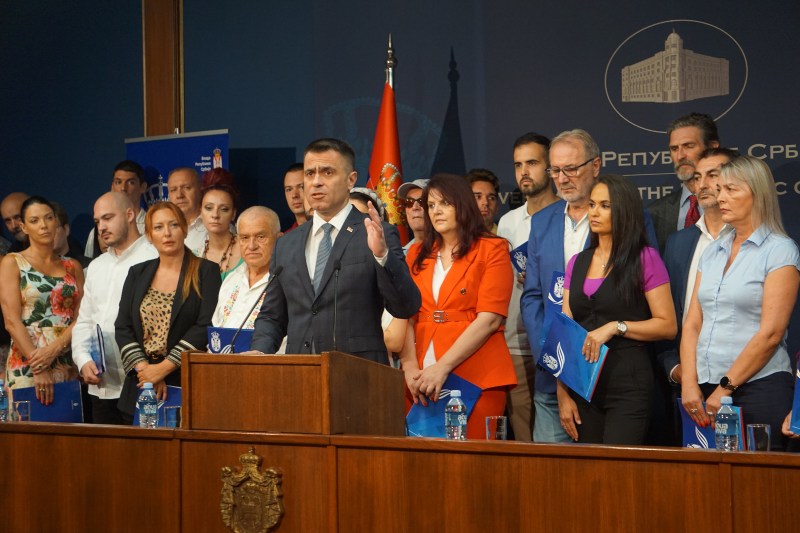 Belgrade, 9 July 2024
Belgrade, 9 July 2024Support for 104 associations in diaspora that preserve Serbian language, culture
-
 Belgrade, 15 April 2024
Belgrade, 15 April 2024Competition for StarTech grants open until 31 May
-
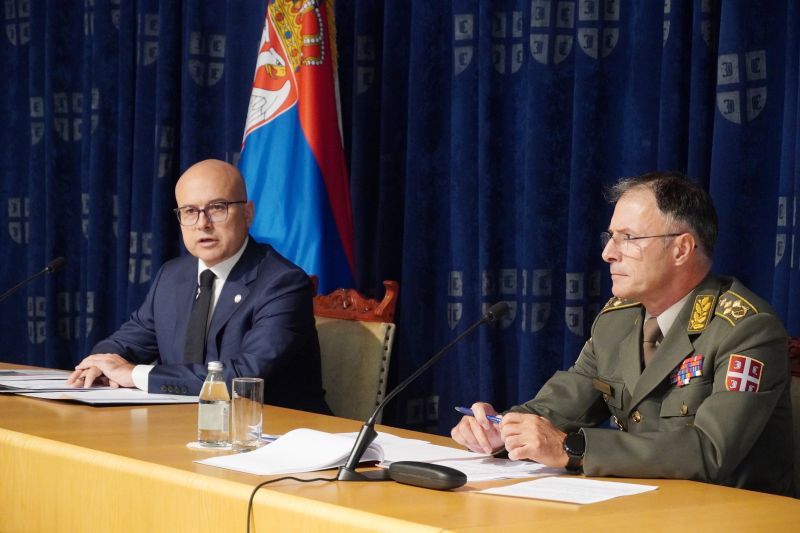 Belgrade, 2 October 2023
Belgrade, 2 October 2023Serbia respects Resolution 1244 and will do everything to preserve peace
-
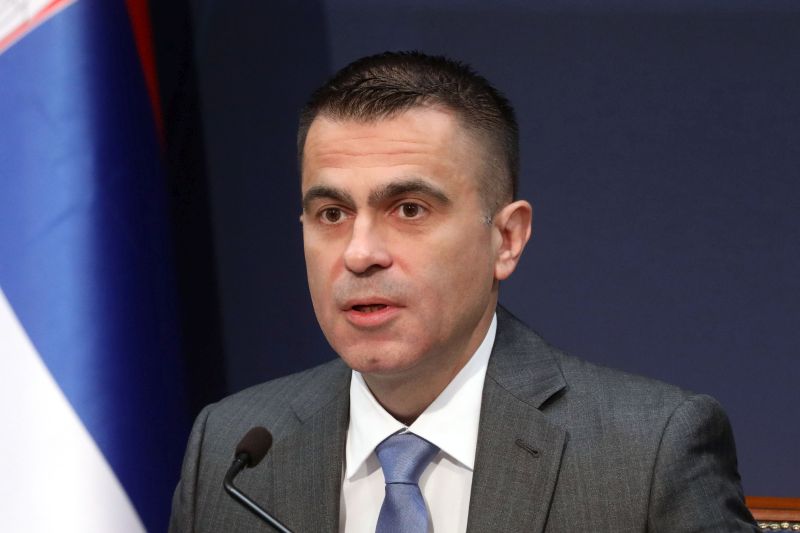 Belgrade, 13 September 2023
Belgrade, 13 September 2023Day of Serbian Unity to be celebrated outside borders of Serbia, Republika Srpska for the first time
-
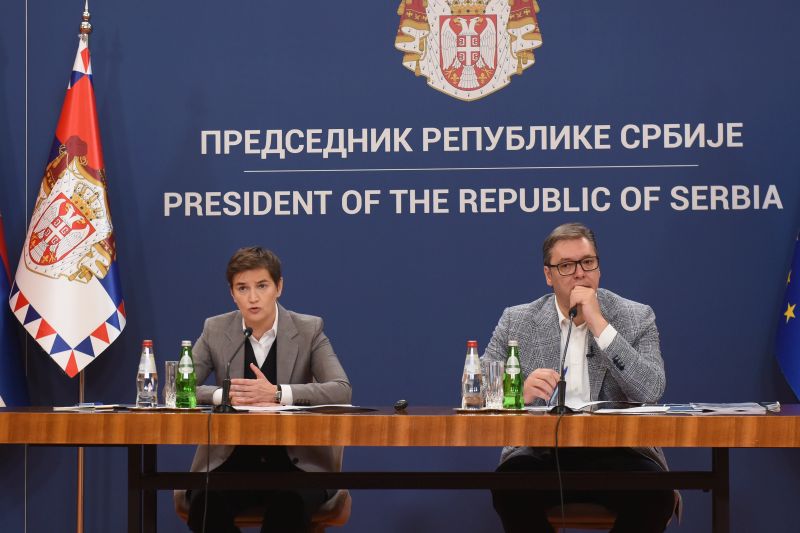 Belgrade, 8 August 2023
Belgrade, 8 August 2023RSD 24.2m in state aid paid out to citizens affected by storm
-
 Belgrade, 17 June 2023
Belgrade, 17 June 2023Belgrade is doing everything to preserve peace in Kosovo and Metohija
-
 Belgrade, 15 June 2023
Belgrade, 15 June 2023Slovenia will continue to support Serbia on its way to EU
-
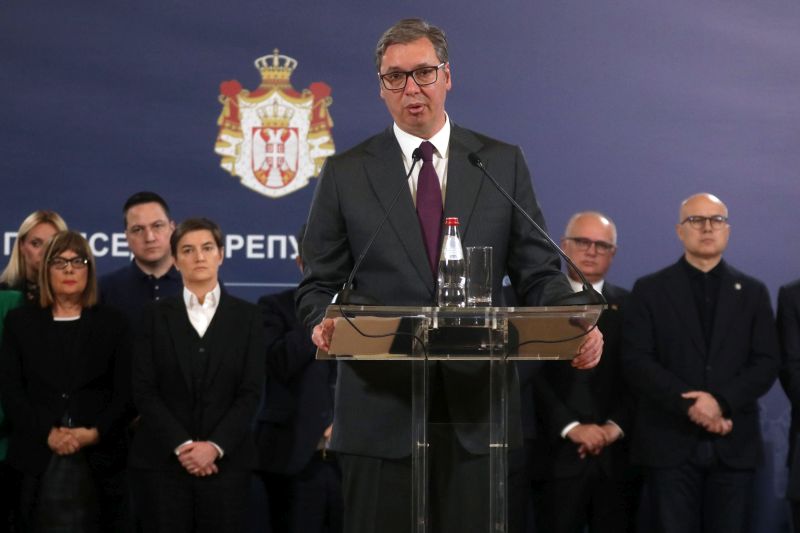 Belgrade, 5 May 2023
Belgrade, 5 May 2023Emergency measures, tightening of conditions for possessing weapons
-
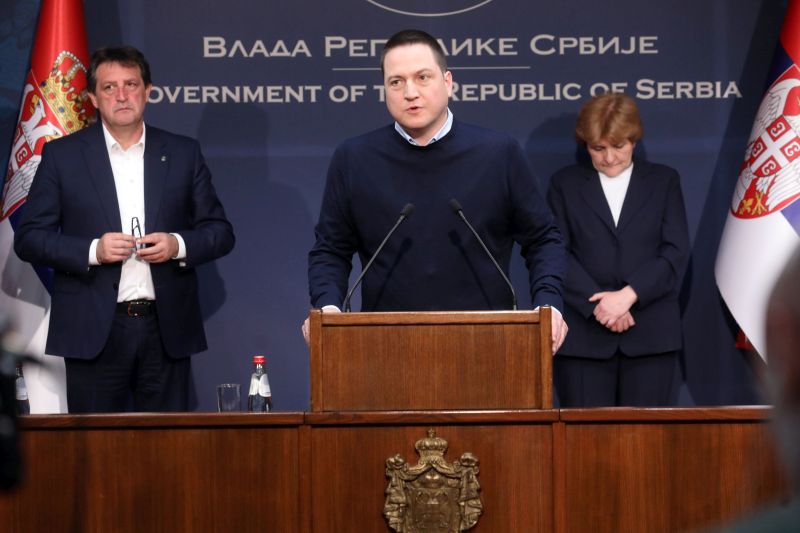 Belgrade, 3 May 2023
Belgrade, 3 May 2023Three days of mourning in Serbia over tragedy at Vladislav Ribnikar primary school

